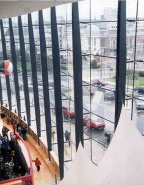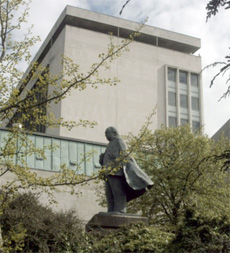
The Challenge
Bradford's popular National Museum of Film and Photography has had a security facelift with the introduction of new networkable digital CCTV from Dedicated Micros.
The museum is the only one of its kind in the UK and contains some valuable and unique exhibits. Security proved a key area to address during a recent relaunch and refurbishment.
Faced with growing video tape management issues and problems with picture quality, museum management called in John Archbold, sales consultant at system installers ADT and a former Crime Prevention Officer for North Yorkshire Police to advise on the best solution.
He explains: "Grainy picture quality and wide angle shots meant that very few camera images could be used for evidential purposes. We narrowed the system to focus on key fields of view and opted for a user-friendly digital solution where images would be easy to retrieve and manage." The Solution
The Solution
A 16-way Digital Sprite Lite multiplexer has been installed with seven fixed cameras focused over all the entrances and exits with automatic activity detection and capacity for system growth. The museum's security team benefit from all the control advantages of the digital format: with incident footage saved to hard drive, there are no video tape management issues and they can review and playback footage without having to pause recording.
'Digital Sprite Lite's menu-based set-up means that it was especially simple to programme and manage.' Says John: "We usually allow for around five labour hours to install a video and multiplexer based security system but with Digital Sprite Lite, it was up and ready to use in less than an hour."
Museum Chief Warder Bob Cuckson commented: "The picture quality with Digital Sprite Lite is excellent - even when enlarged significantly - and the fact that we can pull up images at the touch of a button, rather than spooling laboriously through video tapes, is a great time-saver. We have found the new system to be reliable and user-friendly."
 Camera images are monitored round the clock from the central control room on-site. Images of incidents are downloaded onto a zip drive connected to the multiplexer for evidential purposes. The local police station situated across the road from the museum can then save stills from the zip disk onto a floppy disk.
Camera images are monitored round the clock from the central control room on-site. Images of incidents are downloaded onto a zip drive connected to the multiplexer for evidential purposes. The local police station situated across the road from the museum can then save stills from the zip disk onto a floppy disk.
The museum is planning to network the system in the near future with live and recorded video delivered straight from the cameras to managerial PCs located around the building. Says Bob Cuckson: "Rather than having to sit in the control room all day to view the camera images, I will soon be able to view what is happening from my general office."
41 mono cameras controlled by a DM Uniplex multiplexer complete the security picture. The management aims to upgrade the whole system to digital in time and is currently looking at adding Digital Sprite Lite-controlled cameras to other crime hot spots such as the museum shop.
















